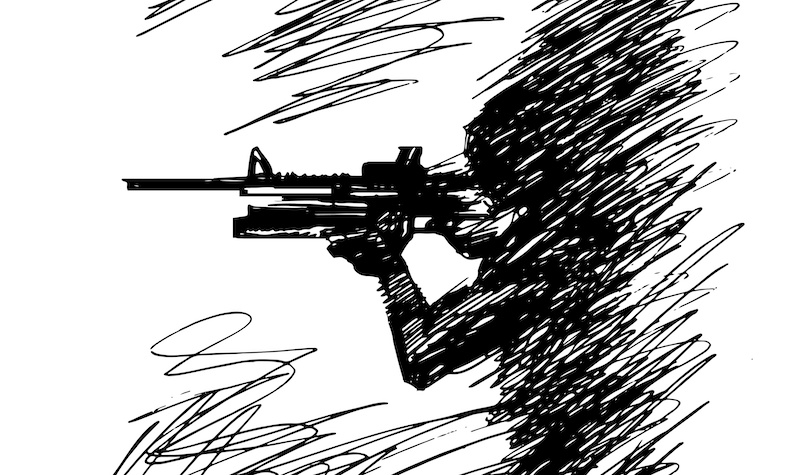Russia shootings: Lone wolves and their characters
September 2021: Lina Kolesnikova analyses two shootings – one at a school and one at a university, looking at each attacker’s profile, their pre-attack behaviour and their plans. She identifies some key points for discussion around the complexities of recognising lone-wolf characteristics and dealing with the issues that could lead to such attacks

On September 20, an armed first-year student killed six and wounded dozens on the premises of the Perm State University in the Ural region of Russia. This was Russia’s second severe incident of mass shooting at an educational facility this year, the first being in Kazan, Tatarstan, where an attacker killed nine and wounded more than 30 people at a school on May 11.
Both cases have many similarities in terms of the attackers’ profiles and their modus operandi, all of which should be taken into account by security professionals.
Both attackers were young males – 18 and 19 years of age – living in dysfunctional families. They had either a very distant, or no relationship with their father. They showed an interest in arms, ammunition and violent computer games. Both had problems communicating with other teenagers and were often the subject of practical jokes.
In the pre-attack periods, both attackers expressed their misanthropic views publicly – Kazan’s attacker took to social networks, while the student from Perm used verbal expression, both referring to people as: “Biowaste.” Neither teenager was taken seriously by the people around them.
Kazan’s attacker had had medical treatment for serious headaches and was diagnosed with encephalopathy. The post-event medical check diagnosed him with mental health problems. He referred to himself as: “A god.”
In his pre-attack video, Perm’s attacker explained his actions using the phrases ‘voices order’ and ‘split personality’, which could indicate serious mental health problems.
Neither of the attackers had any political or religious motives, nor any accomplices. So, they are classic lone wolves. There were no anti-women or anti-men feelings expressed by either attacker and both men adopted a military style in their clothing, with some copying of images of computer war games.
Both attackers obtained their arms legally, following the necessary approval from psychiatrists. Perm’s attacker had failed the first test but managed to pass the second time after learning answers by heart – he researched and found the “right” answers on the Internet.
The choice of target was familiar to each attacker, so they could move easily because they knew the area. Kazan’s attacker chose his former school; Perm’s attacker selected the university where he had just begun to study. In his pre-attack video, the latter explained that he had originally considered his school, but then changed his mind.
The attackers did not intend to kill specific people, eg classmates, groupmates or teachers. Perm’s attacker even selected premises where his own University group was not present, as he liked some of the people in it and did not want to: “Bring any harm to them.” He wanted the operation to conclude with his own death at the hands of a policeman, a desire for “suicide by cop”.
Before Kazan’s attacker carried out the shooting and IED detonation at the school, he was also responsible for other previous crimes. He had tried to set fire to his rented apartment with the aim of blowing up the entire building. Fortunately, the fire was not intense enough and the plan did not succeed.
There are some critical bullet points to take away regarding the shootings:
-
Lone-wolf attacks are considered by law enforcement as the most difficult to prevent. We can see that these people expressed their ideas beforehand, verbally or on social networks, but they were not taken seriously by other people. And even if terrorism gets more attention and the public is more aware of the possible troubling signs in a potential terrorist’s behaviour, the disturbed youth with no political or religious agenda is still below the radar of public attention;
-
With increasing attacks showing a direct translation to the web, we can forecast more attacks involving elements of gamification with an attempt to attract more of an audience and to mimic video games;
-
The legal possession of arms from the age of 18 in the urban areas of Russia is of serious concern. Hunting cannot be a pretext for owning a firearm if young people live in big cities with no hunting areas or traditions. The argument that a potential killer can find any firearm, in any way, is irrelevant. If the arms are illegal, there are more chances to be caught by the police during the buying process. Other arms such as knives are not so lethal, especially in inexperienced hands, and they allow a greater window of opportunity for victims to escape or use self-defence. The process of obtaining legal permission should be made longer as it provides an opportunity to recognise abnormal behaviour. There is little doubt that the minimum age for the legal possession of arms should be increased;
-
Shooting clubs should receive constructive help from law enforcement and psychologists regarding situational awareness and active shooters’ profiles. This might become one of the obligations when such clubs get a licence to operate; and
-
The role of psychiatry in our lives is an important issue. Despite some positive developments in this area, it is often still a taboo subject for a serious discussion. There are people who need help and attention without fear of being stigmatised. The obvious issue here is finding a balance between the need to find those few, versus the many who might miss out on some life opportunities – such as exclusion from the workplace or from studying – if they seek psychiatric help.
Image: Samuii/Adobe Stock